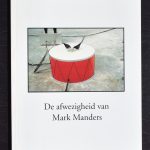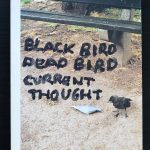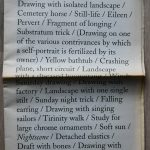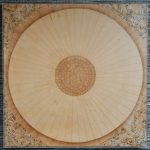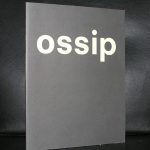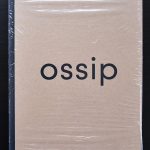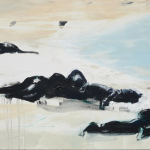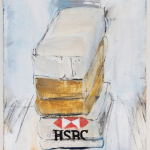
This is an artist I really like since his painting is not only fast and contemporary, but he makes political statements with his painting that are important. This is possibly also the reason why his paintings are not found within the large museum collections. Only some daring museums that are not afraid to take a stand will add his works to their collection. But these works are important since, in. a an artistic way, they confront you with the world around us that is easily and possibly conveniently forgotten.
Since the very beginning of his career in the 1970s, Brian Maguire has approached painting as an act of solidarity. He operates a truly engaged practice, compelled by the raw realities of humanity’s violence against itself, and the potential for justice.
Maguire’s preoccupations draw him to the margins of the art world—alternative space, prisons, women’s shelters, and psychiatric institutions—making shows in traditional gallery and museum spaces something of a rarity. Maguire’s most recent paintings directly confront issues of migration, displacement and human dignity in the face of the current global unrest. They are some of his most nuanced and ambitious to date, which he has crafted with larger brushes and thinned-down acrylic on canvas. He works slowly, using photographic sources, searching for that point where illustration ceases and art begins. This growing contrast between the seductive painterly aesthetic and the subject matter only adds to the potential impact of these formidable canvases.In 2018 Maguire released his newest publication that displays a substantial new artist monograph surveying his career to date. Maguire has shown extensively in Europe and the US, also participating in shows in Korea, China and Japan.
Recent solo exhibitions include: War Changes It’s Address, United Nations Headquarters, New York, USA, (2020); Scenes of Absence, Rubin Center, Texas University, TX, USA, (2019); Escenarios de ausencia, Art Museum Ciudad Juárez, Mexico, (2019); War Changes Its Address: The Aleppo Paintings, Irish Museum of Modern Art, Dublin, (2018); Concerned, Royal Hibernian Academy, Dublin (2018) and the European Parliament, Brussels (2012). Recent group exhibitions include: Naked Truth, Crawford Art Gallery, Cork, (2018); Demise, Cleveland University Art Gallery, Cleveland, OH, USA, (2018); The sea is the limit, York Art Gallery, York, UK, (2016); Conversations, the Irish Museum of Modern Art, Dublin (2014) and Ni Una Mas, Leonard Pearlstein Gallery, Drexel University, Philadelphia, USA, (2010).
Maguire’s work is represented in the collections of Irish Museum of Modern Art; Dublin City Gallery The Hugh Lane; Museum of Fine Art Houston, Texas; Gemeentemuseum, Den Haag, The Netherlands; Alvar Alto Museum, Finland.
www.ftn-books.com has one Maguire title available












